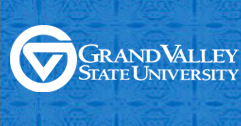Charting a New Course for a Historically White Fraternity
Location
Hager-Lubbers Exhibition Hall
Description
PURPOSE: The purpose of this research project is to develop a strategic plan that will enable a historically white fraternity at GVSU to grow beyond stereotypes and social norms of organizational culture. In conducting an organizational assessment using an analysis model of strengths, weaknesses, opportunities, and threats (SWOT), the information gathered will help to develop the objectives and goals for a multi-year strategic plan. SUBJECTS: The first two groups surveyed were current active members and alumni members. Approximately 30-40 active members out of 80 available and 20-30 alumni out of 300 possible participated in the various surveys and focus groups. A third group of campus stakeholders will be utilized to provide an outside perspective as to the reputation of the chapter. METHODS, MATERIALS, AND ANALYSES: For the active members, four short surveys were utilized to obtain their perspectives for the SWOT analysis. A survey aligning with the SWOT methodology was utilized with alumni as well as two Focus Groups. A survey will also be used with the campus stakeholders. RESULTS: The initial results have highlighted several areas that will serve as objectives in the strategic plan, including better practices for chapter accountability, expanding diversity of members, improved recruitment standards, increase in alumni engagement, and alignment with chapter values. CONCLUSIONS: With the information that has been gathered thus far, trends have shown that the chapter has struggled with the same issues and challenges for many years. The purpose is not to pass blame on inaction, but to focus on becoming something different and better.
Charting a New Course for a Historically White Fraternity
Hager-Lubbers Exhibition Hall
PURPOSE: The purpose of this research project is to develop a strategic plan that will enable a historically white fraternity at GVSU to grow beyond stereotypes and social norms of organizational culture. In conducting an organizational assessment using an analysis model of strengths, weaknesses, opportunities, and threats (SWOT), the information gathered will help to develop the objectives and goals for a multi-year strategic plan. SUBJECTS: The first two groups surveyed were current active members and alumni members. Approximately 30-40 active members out of 80 available and 20-30 alumni out of 300 possible participated in the various surveys and focus groups. A third group of campus stakeholders will be utilized to provide an outside perspective as to the reputation of the chapter. METHODS, MATERIALS, AND ANALYSES: For the active members, four short surveys were utilized to obtain their perspectives for the SWOT analysis. A survey aligning with the SWOT methodology was utilized with alumni as well as two Focus Groups. A survey will also be used with the campus stakeholders. RESULTS: The initial results have highlighted several areas that will serve as objectives in the strategic plan, including better practices for chapter accountability, expanding diversity of members, improved recruitment standards, increase in alumni engagement, and alignment with chapter values. CONCLUSIONS: With the information that has been gathered thus far, trends have shown that the chapter has struggled with the same issues and challenges for many years. The purpose is not to pass blame on inaction, but to focus on becoming something different and better.
